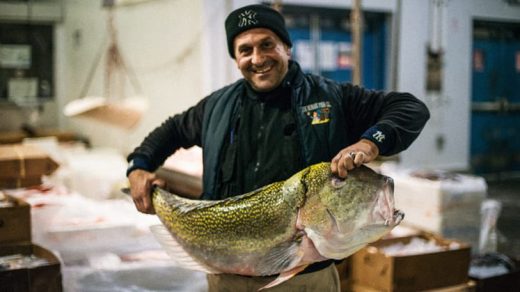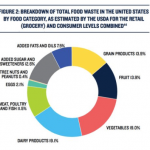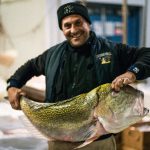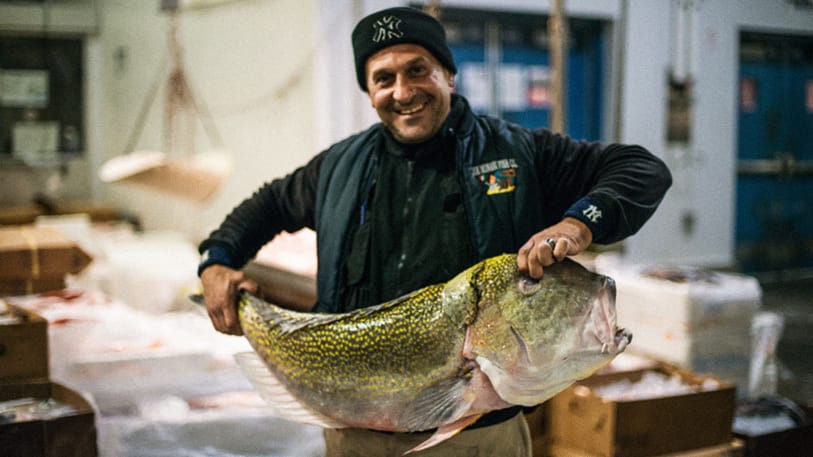The ‘Amazon Of Fish’ Wants To Get Americans Eating More Seafood
At midnight, the shore of Hunts Point–where the Bronx meets the East River–comes alive. Crew unload up to a million pounds of fish from shipping containers and haul them into the New Fulton Fish Market, a 700,000 square foot warehouse that replaced the original Fulton Fish Market, which operated in Lower Manhattan from 1822 until it was shuttered in 2005 and moved to the Bronx. Seafood streams into the market from fisheries along the Atlantic Seaboard and around the world, where it lands in a system that, as Mike Spindler, CEO of the startup FultonFishMarket.com tells Fast Company, “really has not changed or modernized in several hundred years.”
FultonFishMarket.com is not, as it may seem, the catchall website for the New Fulton Fish Market. The market itself is a cooperative made up of 24 individual multigenerational, family-run large fish wholesalers that have been in business for decades, some over a century, and distribute to retailers and restaurants in the New York area. FultonFishMarket.com is a separate venture–a startup that curates and sells a selection of fresh, sustainable fish sourced from those wholesalers, and distributes it to both restauranteurs and individual consumers across the U.S. The startup prides itself on speed: An order made in San Francisco, Spindler says, will reach its destination within the same time frame as an order placed in New York. While FultonFishMarket.com will sell frozen fish on occasion, most of it, Spindler says, is delivered fresh.
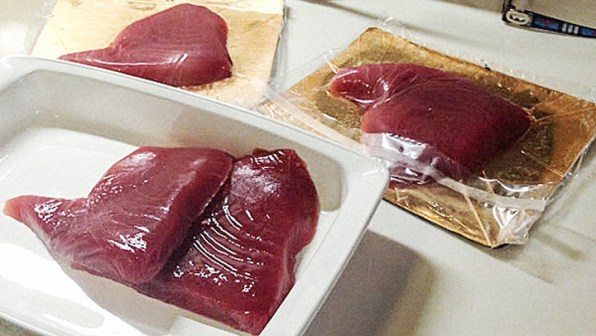
It is, essentially, the Amazon of fish, but the significance of bringing data and tech to the fishing industry, Spindler says, is not to be understated. FultonFishMarket.com packs and delivers its products from a stand in the Bronx warehouse, and “anything that comes to our stand goes from 2000 BC to the 21st century in the blink of an eye,” Spindler says.
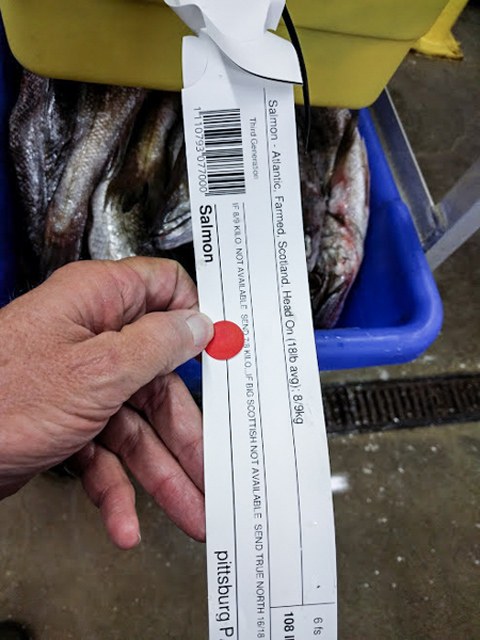
Most of the fish that arrives at Fulton Fish Market, once unpacked, is labeled with handwritten tags, moved to the vendors that handle it, then parceled off to purchasers in the surrounding area. FultonFishMarket.com takes a more tech-driven approach. As an example, Spindler describes the process of selecting Atlantic Sea Bass for distribution through the startup. On a given night, he says, Atlantic Sea Bass may come into the market at midnight from 10 different landing points across five states. The company’s quality assurance directors select fish from the various vendors, then move it to the startup’s section of the market. There, the weight, temperature, and source data–including the boat, loading dock, and catch method–for each fish is recorded in the startup’s proprietary system, and the fish is tagged with a bar code that specifies the aforementioned details, along with the destination of the fish and the route.
The fish is then packed in cooler boxes, labeled, and sent off to the airport. Most of the flights that FultonFishMarket.com uses leave between 6 and 7 am; to get the fish there on time, it has to depart the market at 4 am. The whole process of selection, recording, and distribution takes around four hours, but it’s designed, Spindler says, to equip consumers with more awareness of the origins and impact of their purchase.
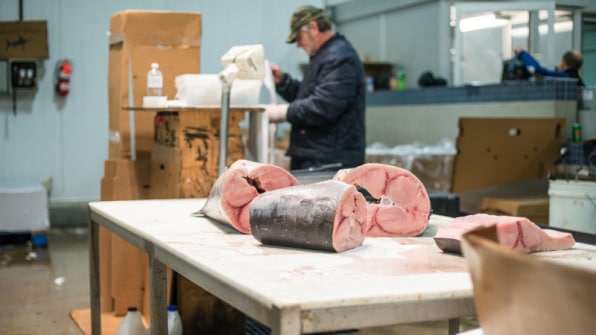
Sites like Seafood Watch assess the sustainability and impact of each species of fish by looking at catch methods, location, and environmental circumstances, and organize options into the categories of “best,” “good,” and “avoid.” According to Seafood Watch, wild black seabass caught in the U.S. Mid-Atlantic region is a best choice for causing very little harm to the environment and resulting in minimal bycatch of other species; black seabass caught in the same region by otter trawl, however, is to be avoided because the catch methods damage both other species and the marine environment. Knowledge of both catch method and specific details of the location are crucial for consumers looking to make an informed decision about how to purchase sustainable fish, Emerson Brown, a representative for Seafood Watch, tells Fast Company.
FultonFishMarket.com provides all those details, Spindler says, but only after a consumer places an order–making it somewhat hard to make the most sustainable choice. “The available seafood on any given day may be selected from one dock versus another, or one boat versus another because it is fresher,” Spindler says. “What that means is that the boat, dock, catch method and fishery won’t be known until we actually select the fish for your order.” But the overall aim of the startup, Spindler says, is to deliver only those fish that have been caught by methods which minimize the environmental impact on the locations in which they’re harvested.

Spindler also hopes the startup reenergizes the Bronx facility. While the Fulton Fish Market’s resources are enormous–around over 200 million pounds of fish, comprising around 6,000 species and valued at $1 billion pass annually through the warehouse–it represents a mode of commerce that’s slowly dying, Spindler says. “There’s this tremendous asset in the South Bronx, but it’s going to waste because few people buy fish this way anymore,” Spindler says. Over 90% of fish consumed in America is imported from overseas, along an opaque supply chain that traverses up to 5,000 miles. Fish that travel along it are frozen or packed into cans. Documentation, certification and standardization are rare, and a good deal of the fish is caught and sold illegally to keep prices low. In turn, the U.S. exports around a third of the seafood caught locally, and the rusty global supply chain churns on.
FultonFishMarket.com aims to be an alternative to that system by prioritizing fish caught in U.S. waters, where both farmed and wild-caught fish and shellfish are regulated by state and federal agencies like the U.S. Department of Agriculture and the Environmental Protection Agency. The startup also sources some of its fish from overseas farms, but only those with a proven record of sustainable practices, like Bakkafrost in the Faroe Islands, which raises its salmon on non-GMO feed and uses no antibiotics.
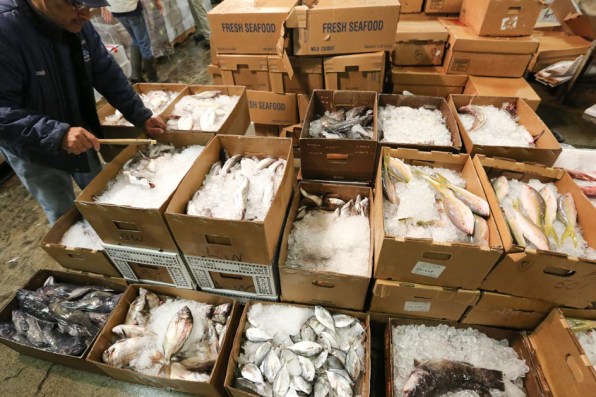
Spindler hopes FultonFishMarket.com will slowly raise the amount of fish in American’s diets, by ensuring that fresh fish ends up on local plates. (America is the test market for this e-commerce-based model of fish distribution, but Spindler says it has the potential to work in other countries as well.) “Anything on our consumer site, we know where it was caught, we know the vessel, and we know how it was caught,” Spindler says. “If it’s aquaculture-farmed, we know the types of pens it was raised in and the density in the pens; we know whether GMO feed was used or not (if it’s on our consumer site, it’s not); we know whether antibiotics were used ( if it’s on our consumer site, they’re not),” he says.
Through the website, individual consumers and restauranteurs can select from the available fish; FultonFishMarket.com also works with what Spindler describes as a “community-supported fishery” model, where a group of people can go in on an order together, and pick up a share of whatever the startup’s quality assurance director has selected as that day’s choicest fish.
FultonFishMarket.com is still a new venture, and as such, its reach is relatively small. “If you measure us against the overall seafood market in America, we’re a blip on the radar,” Spindler says. But the startup’s business has quadrupled since last year, and its revenue is in the millions. That, to Spindler, signals the potential for further growth, but what will drive that, in the end, will be the quality.
FultonFishMarket.com delivers fresh fish from a New York City warehouse to anywhere in America in less than a day. Can it change American’s relationship with sustainable fish?
At midnight, the shore of Hunts Point–where the Bronx meets the East River–comes alive. Crew unload up to a million pounds of fish from shipping containers and haul them into the New Fulton Fish Market, a 700,000 square foot warehouse that replaced the original Fulton Fish Market, which operated in Lower Manhattan from 1822 until it was shuttered in 2005 and moved to the Bronx. Seafood streams into the market from fisheries along the Atlantic Seaboard and around the world, where it lands in a system that, as Mike Spindler, CEO of the startup FultonFishMarket.com tells Fast Company, “really has not changed or modernized in several hundred years.”
Fast Company , Read Full Story
(39)

